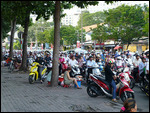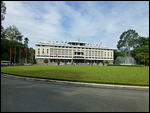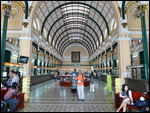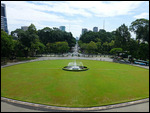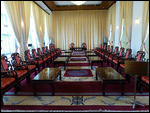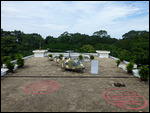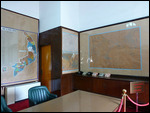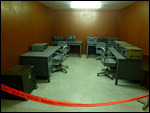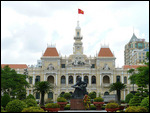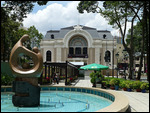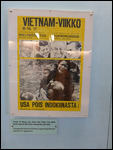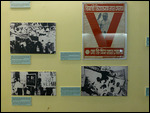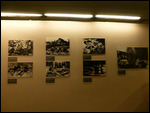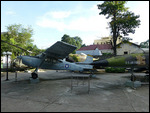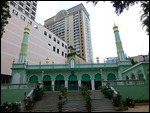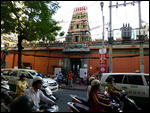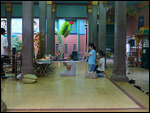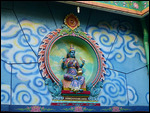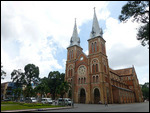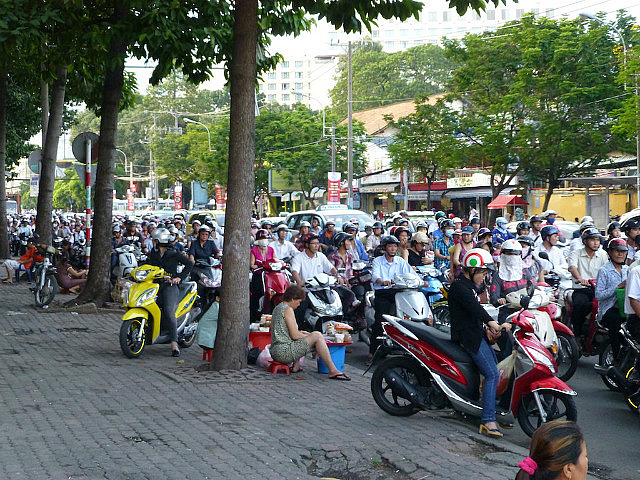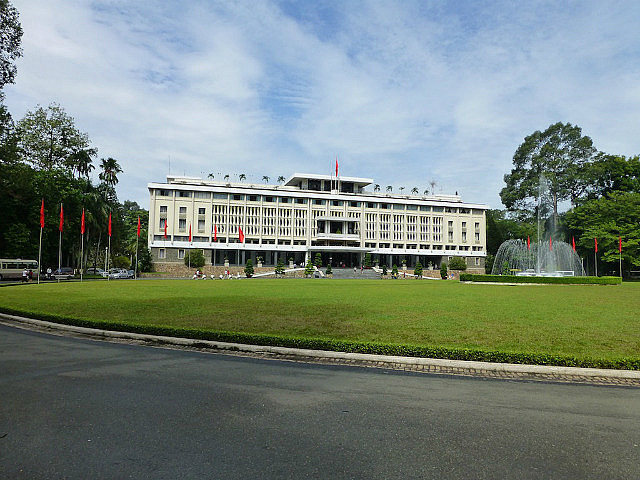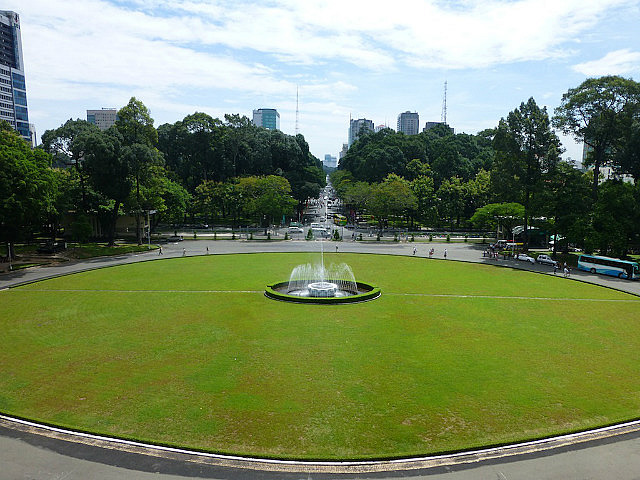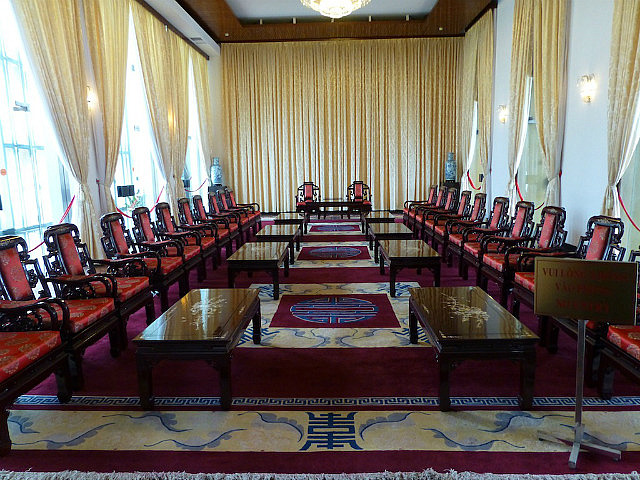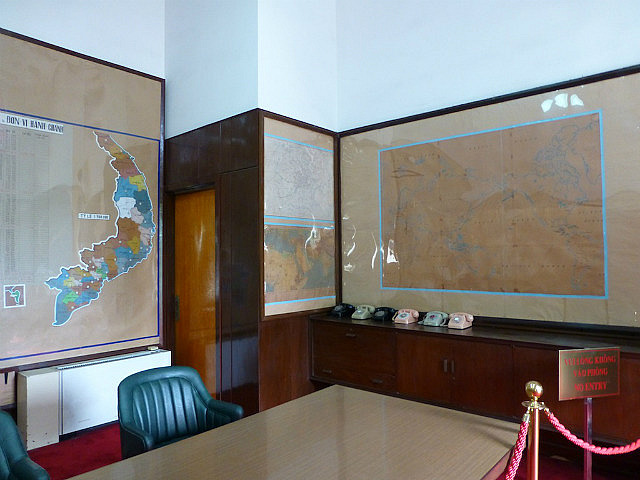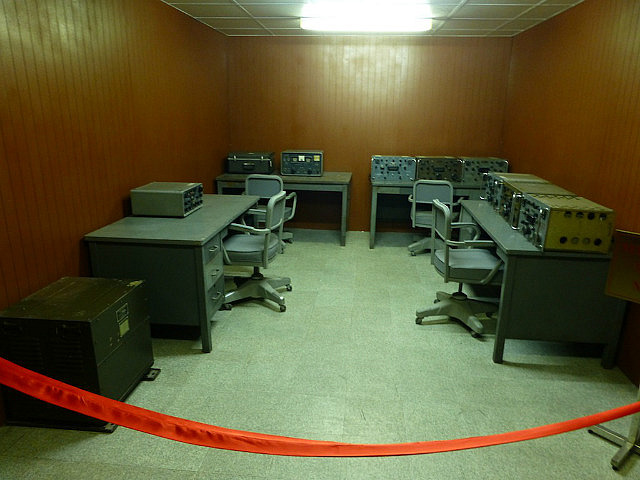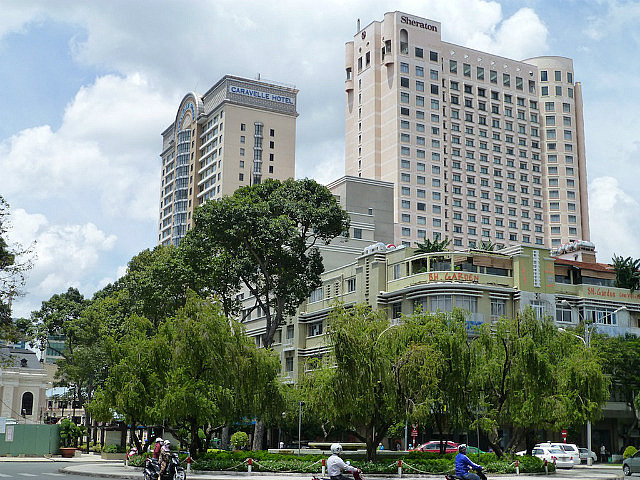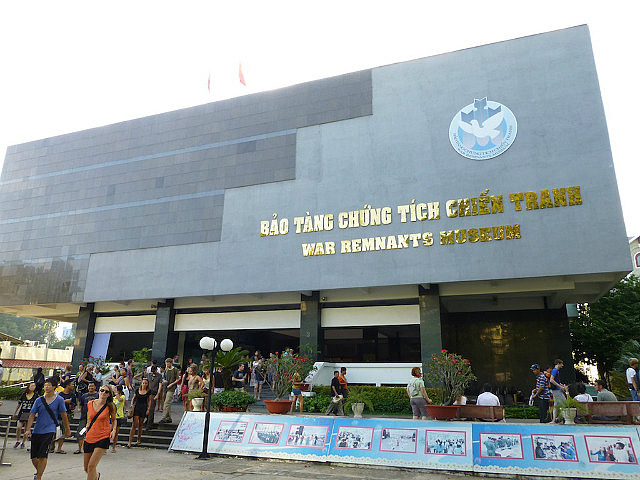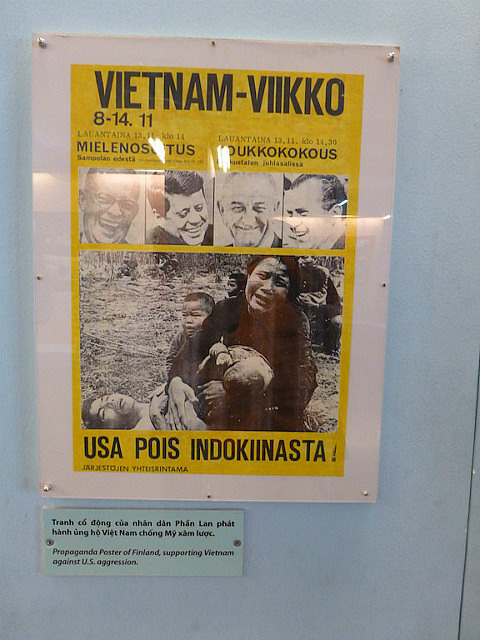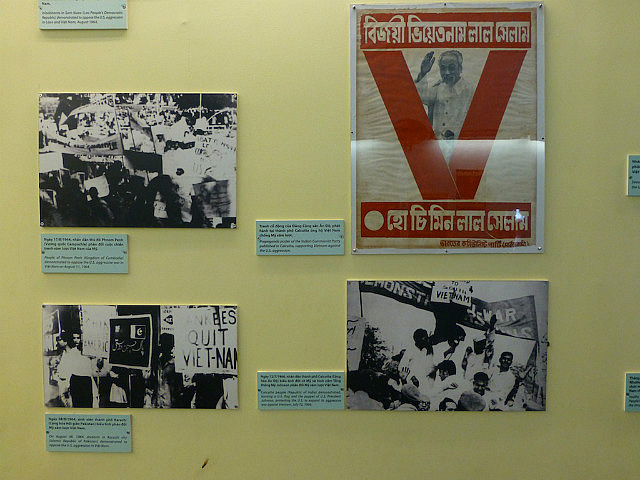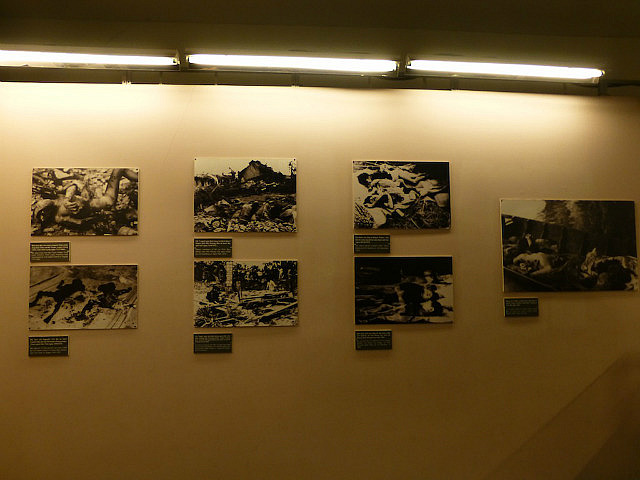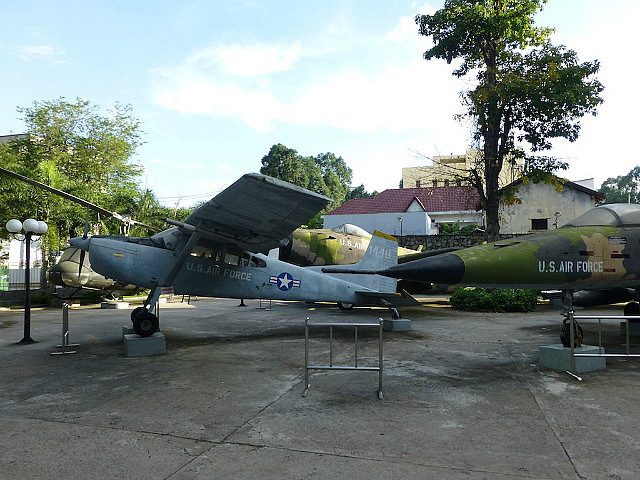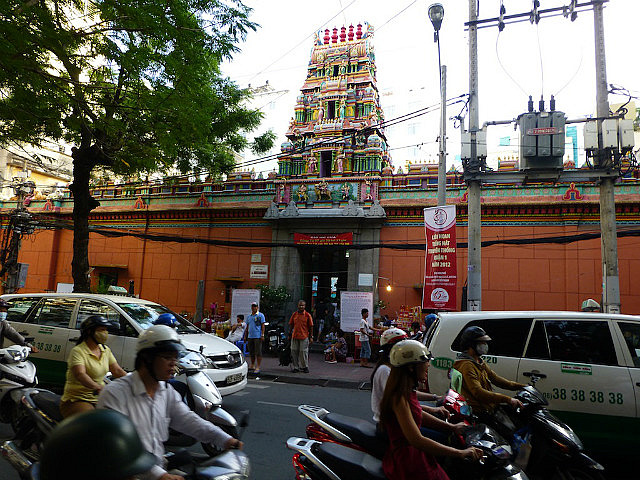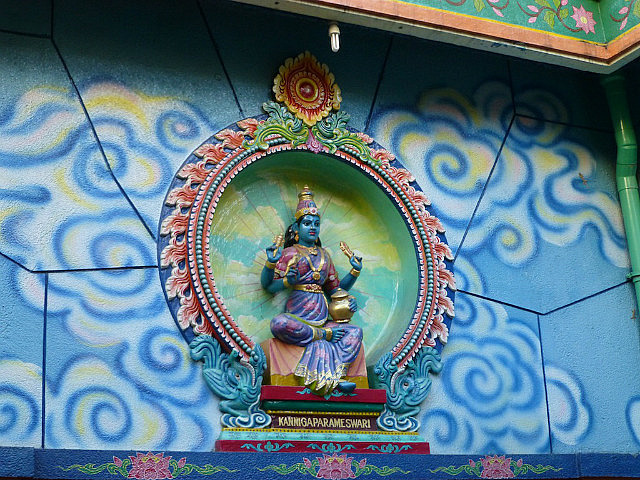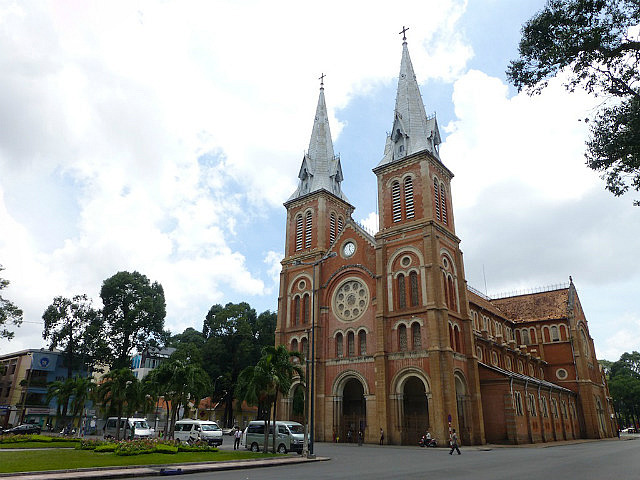We expected Saigon to be an entirely different experience compared to Hanoi and we were not disappointed. To be fair to Hanoi, the weather in Saigon was much cooler when we landed on the Jetstar A320 from the sparkling new Danang International Airport late in the evening. There appeared to be even more motorcycles in Saigon than in Hanoi.
The heat in Hanoi could also not be blamed for the breaking down of V's LCD display on his Android tablet. As luck would have it, the Taiwanese manufacturer of the tablet had a service center in Saigon (aka Ho Chi Minh City, but several locals still refer to it as Saigon - more out of laziness than out of any disrespect to their government). The first task of the day was to visit the service center which turned out to be conveniently on the way to our sightseeing landmarks. It was a refreshing throwback to our profession which we glimpsed on the elevator to the 8th floor of the building accompanied by the crisp shirts and professional demeanor of IT workers, having dealt mostly with tourist service personnel and touts during the past few weeks. Despite us not having proof of purchase, the staff at the service center treated us as a customer should be and offered to examine the computer during the day asking us to get back in the afternoon.
Formerly the Nortre Dame Palace, then renamed to Victory Palace before finally being named Reunification Palace after the Liberation Army entered Saigon in April 1975 and eventually reunified the country, the building was the residence of Nguyen Thuyen, the president of the Republic of VIetnam (South Vietnam) during the VIetnam War. On display are the opulent fittings of the various meeting rooms where foreign and domestic meetings took place as well as his library (which had a book "How to operate a Motel in the US"!), his personal theatre room and finally the underground bomb shelter. The free walking tour provided by a young English speaking woman was filled with humorous references to the opulence as viewed by a young population schooled in their history by the victors of the Vietnam War.
We spent a couple of hours walking through the city centre past Nortre Dame Cathedral, GPO, Historic Hotels (Rex, Caravelle), the Opera House, Community Hall. Indulged ourselves at Fanny's Icecream, reputed for its natural ice cream. The intriguing iconic skyscraper (BiTexco) occupied our attention for much of the afternoon as it kept looming over our heads from various view points.
The mosque, painted green with gold topped minarets, does not loom large over the Saigon sky and you will probably miss it unless you went looking for it. Which is what we did and found it right behind some tall hotels we had seen earlier. The mosque was built by South Indian muslim traders in 1935.
South Indian merchants also built a Mariamman Temple in the heart of Saigon in the 19th century. The Indian population is hardly large enough to care for its upkeep but it seemed in very good condition. There are no presiding priests (posers?) but the temple is popular with several local Vietnamese (some of whom we saw prostrating before the diety) and Chinese. The images in the surrounding yards have the authentic Tamil features and also had names like Meenakchi, Kannigaparameshwari etc. The very detailed notice made for interesting reading with the highlight being the mention of Maduraiveeran (!) as one of the guardians of the Amman. The other being the alternative meaning of Mari (Rain or Change!) in Tamil.
No less than 3 persons warned us against casual electronics use on Saigon streets in a span of 24 hours. Our hotel doorman was the first who warned us against that. As we were trying to locate the Mariamman temple with M's computer, a woman from a shop nearby gestured to us to close the computer and put it away. And finally, when we were taking a few photographs in a city square, a policeman approached us and asked us to take care and be aware of motorcycle snatchers.
The War Remnants Museum in Saigon is a very different sort of museum. After a brief nod to US intellectuals and demonstrators who protested the US involvement in Vietnam as well as the wealth of support from other countries, you proceed upstairs to view a comprehensive indictment of the USA's misadventure in Vietnam. The two main themes that form the backdrop of this are the Geneva Convention stipulations and the US Declaration of Independence. The museum uses these two to deconstruct for the visitor how the US violated these stipulations during their 25 year long presence in VIetnam. Cleverly, most data and quotations used in the exhibits are from Americans for the most part and outsiders for the rest. The Agent Orange exhibit covering the US use of toxic chemicals to destroy the environment and the health of Vietnam's civilian population makes for very grim viewing. The shocking assault on VIetnamese civilians in the village of My Lai in 1968 is also covered in detail. The latter exhibits soften the tone to reflect the current atmosphere of diplomatic reconciliation.
We returned to the Service Center to claim V's tablet. The technician briefly described the problem to be with the LCD module. Unfortunately, he needed to order the part which will take a week to arrive. But he did confirm that the manufacture date on the tablet entitled V to 2 more months of global warranty. When V had contacted the US Customer Support, they had asked for the tablet to be shipped back to the US for service, a very unsatisfactory procedure given our RTW plans. Due to our imminent departure for Cambodia, we could not wait for the part to arrive in VIetnam. No service centers were to be found in Cambodia or Myanmar (our next destinations) but several could be found in India. V lost no time in calling up the Madurai service center and they too confirmed that the warranty (using the serial number on the device) was valid for 2 more months.
Having all our electronic devices functioning is critical to both onward trip planning and keeping our blog up-to-date, so hopefully the tablet can be fixed once we are in India.
